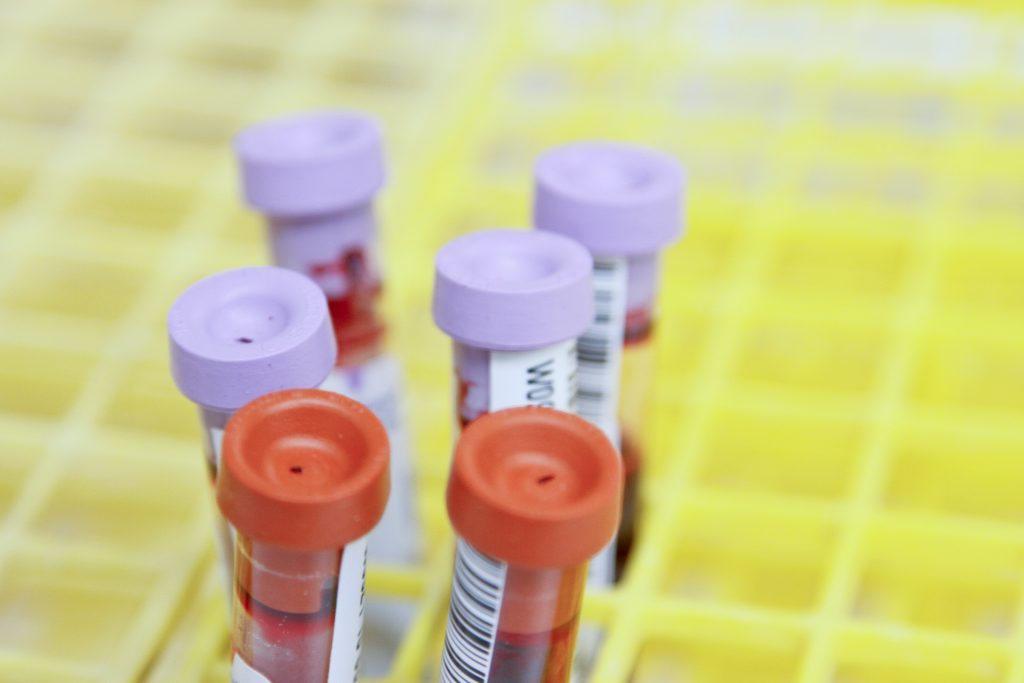

Approximately 280 million people worldwide suffer with depression (IHME, 2019), a condition associated with significant individual and societal burden. Depression is twice as common in women (Malhi & Mann, 2018; WHO, 2023) and often first manifests in adolescence (IHME, 2019; Kessler et al., 2007). At such a formative time depression can impact school attendance and educational attainment, contribute to substance abuse initiation (MHFA, 2020; Thapar et al., 2012), and is a leading cause of death by suicide in this age group (WHO, 2021). Depression is also associated with higher risk of future physical health problems such as obesity and cardiovascular disease (Blasco et al., 2020; Inoue et al., 2020).
Despite improved treatment availability the population prevalence of depression has not decreased (Ormel et al., 2022) and there are stark differences in the availability of treatment in high-income vs. low- and middle-income countries (Evans-Lacko et al., 2018; Mekonen et al., 2021).
New strategies are needed to identify and treat depression early. Understanding underlying biological mechanisms is one approach and there is a growing body of evidence for systemic inflammation as a possible contributing mechanism (Köhler et al., 2017; Milaneschi et al., 2021; Valkanova et al., 2013). Researchers at King’s College London have observed sex-specific differences in two inflammatory markers associated with high-risk of developing depression, in a cohort of Brazilian adolescents (Zajkowska et al., 2023).

Depression is a prevalent global health problem that often first manifests in adolescence.
Methods
Adolescents (14-16 years) were recruited from schools in Porto Alegre, Brazil, and were split into three equal groups (total n=150) with a 50:50 ratio of male:female participants:
- Non-depressed low-risk
- Non-depressed high-risk
- Current major depressive disorder (MDD)
High vs low-risk was defined using an established prediction score (previously developed by the same authors) that is based on summing several relevant sociodemographic risk factors like drug use, relationship with parents and social isolation (Rocha et al., 2021). Depression was confirmed by the Patient Health Questionnaire-Adolescent version (PHQ-A). Depression severity was assessed by the Children’s Mood and Feelings Questionnaire (MFQ-C). Inflammatory markers (interleukins: IL-2, IL-6, IL-8, IL-10, IL-12p70, IL-13; tumour necrosis factor/TNF-α, and interferon/IFN-γ) were measured from serum blood samples (pg/mL).
The authors assessed mean differences between groups for each of the inflammatory markers. They also tested the correlations between these inflammatory markers and the participants’ self-reported depression severity. Regression modelling techniques were then used to allow them to test whether sex changes or moderates the relationship between relevant cytokines and depression severity.
Results
Blood-based inflammatory markers
Overall sample (males and females)
- In the overall sample, serum levels of all inflammatory markers (other than IL-13) appeared to be elevated in the high-risk and the MDD group as compared to the low-risk group.
- However, these differences between groups were not statistically significant (all p-values >0.05).
Split by sex
- When groups were split by sex, the authors found evidence of an interaction between depression risk group and biological sex for one inflammatory marker, IL-2.
- Specifically, IL-2 levels were found to be increased in the high-risk group vs the low-risk but only in young males.
Relationship between blood-based inflammatory markers and depression severity
Overall sample (males and females)
- In the overall sample, levels of IL-2 and lL-6 were strongly positively correlated with depression severity.
- There was some evidence of a weaker correlation between other pro-inflammatory markers, namely IL-12p70, IL-13, IL-8 and TNF-α, and higher depression severity.
- On the other hand, two anti-inflammatory markers, IFN-γ and IL-10, appeared to be weakly negatively correlated with depression severity.
- These findings suggest that higher levels of inflammation in the blood are associated with higher (self-reported) depression severity.
Split by sex
- When groups were split by sex, there was evidence of an interaction between sex and depression severity.
- Specifically, the correlation between IL-2 and depression severity observed in the overall sample only remained in young males.
- This correlation was also stronger compared to that observed in the overall sample.
- Interestingly, the correlation between IL-6 and depression severity observed in the overall sample remained only in young females and was again stronger here than in the overall sample.
Sex-specific moderation
- Results from regression models discussed above suggest that severity of depression is partially moderated by IL-2, where the variation in depression severity explained by IL-2 was 3.4% (p=0.022). This means that the remaining 96.6% of the variation is explained by other factors.
- In comparison, a much smaller amount of the variation in depression severity was explained by IL-6 (0.6%; p=0.337), suggesting no moderation for this immune marker.
- In young males, there was a positive relationship between depression severity with IL-2 and IL-6, however, this was only significant for IL-2 (p=0.004).
- Conversely, in young females, analyses showed a significant positive relationship between depression severity and IL-6 (p=0.008) while the relationship with IL-2 was negative and not significant (p=0.671).
- Overall, these findings suggest that different inflammatory cytokines contribute to depression severity in young males compared to young females.

Inflammation is associated with depression risk and severity, but the specific immune proteins responsible for the relationship likely differs between sexes.
Conclusions
These findings suggest that the inflammatory cytokines IL-2 and IL-6 are associated with both the risk of developing depression, and with the severity of depression one experiences. This relationship is modified by sex whereby the authors conclude that:
IL-2 may increase risk for depression and severity of depressive symptoms in boys, but not in girls. However, IL-6 may increase risk for more severe depressive symptoms in girls.

In young males, the inflammatory cytokine IL-2 is associated with higher depression risk and depression severity. However, for young females, IL-6 seems more important.
Strengths and limitations
Female sex and adolescent age are important risk factors for depression, yet these groups are underrepresented in research. This study seeks to understand possible biological differences underlying depression risk in these groups, in a low- and middle-income country. As noted by the authors, this is a cross-sectional analysis and therefore reverse-causality is a key limitation, meaning it is unknown whether inflammation came before or is the result of the depression or sociodemographic risk-predicting factors.
A previous publication detailing the composite risk score (used to split participants into groups) suggested that this method has good predictive ability in a Brazilian adolescent population (C-statistic 0.76–0.79) (Rocha et al., 2021) and that the sample in this study is comparable with the Pelotas cohort in which the predictive model was developed (Kieling et al., 2021). Therefore, the risk of misclassifying groups is reduced. Furthermore, the assessment of depression presence and severity was supported by two widely used, validated questionnaires. It is worth noting, however, that prediction is not perfect (for context a C-statistic of 0.50 represents random concordance (Pencina & D’Agostino, 2015)). So, some individuals may still be incorrectly identified as high or low risk.
The authors use appropriate statistical techniques, report their methods clearly and adjust for multiple testing. There are a range of exclusion criteria (e.g., low IQ, concomitant conditions and use of psychotropic or anti-inflammatory medication) and thus these factors cannot be influencing the associations observed. However, this also means the results are not generalisable to individuals with these factors.
Baseline characteristics are reported in a separate paper (Kieling et al., 2021). BMI is similar between groups along with the time of day at which blood samples were taken (an important strength as inflammation exhibits circadian rhythmicity (Xu et al., 2021)). However, analyses do not appear to be adjusted for confounding by certain prevalent risk factors of depression and inflammation such as alcohol consumption and smoking, and the distribution of these between groups is unclear. The 11 sociodemographic variables used as predictors of depression risk are, as would be expected, imbalanced between groups. Together these factors predict future depression, however, it is difficult to separate associations between inflammatory markers and these sociodemographic factors from the association of interest (i.e., between inflammatory markers and depression risk/presence).

Female sex and adolescent age are important risk factors for depression, yet these groups are underrepresented in research. This study nicely addresses this pertinent issue but remains subject to common limitations of cross-sectional research.
Implications for practice
Despite an improvement in treatment availability, the population prevalence of depression has not decreased (Ormel et al., 2022) and research suggests that in up to 60% of adolescents current pharmacological therapies do not work (Cuijpers et al., 2023; Howes et al., 2022). Furthermore, ~75% of people living in low- and middle-income countries (LMICs) do not have access to these treatments (Evans-Lacko et al., 2018).
Understanding biological mechanisms underlying the development of depression is one approach to identifying novel early markers and treatment targets. This study is consistent with existing research which has shown associations between inflammatory proteins and current depression (Köhler et al., 2017). Additionally, this study shows that inflammatory cytokines may be elevated in adolescents who are at risk of (but not currently presenting with) depression. The clinical implication of this is that inflammation is a possible target for the early identification and prevention of depression, especially considering the fact that inflammatory cytokines can be easily and affordably measured in blood. Importantly, this research also highlights differences between depression-related inflammation in young males and females, suggesting that different approaches may be needed per sex in clinical practice.
One way to reduce inflammatory cytokine levels is with anti-inflammatory medication (Vöckel et al., 2024). Indeed, drugs which reduce IL-2 and IL-6 already exist for other conditions, like rheumatoid arthritis, and these are possible candidates for drug repurposing. However, this would rely on successful randomised controlled trials to demonstrate safety, efficacy and a favourable risk/benefit profile, as well as on the availability of these drugs. Pharmacotherapy is not the only strategy and it may be pertinent to consider inflammation-reducing strategies which are less costly to the health service and more feasible to implement in an LMIC setting, such as diet and exercise.
In the wider context, inflammation is only part of the picture; explaining part of the variation in overall depression risk. As a result, reducing IL-2 and IL-6 may not meaningfully reduce the risk of, or successfully treat depression, in all people. Results of a recent meta-analysis support the sub-grouping of individuals into inflamed and non-inflamed depression groups which is a promising strategic direction and should be considered before the application of inflammatory treatment in psychiatric contexts (Osimo et al., 2019).

Inflammatory markers are easily measured in blood and strategies that reduce inflammation may prove useful in reducing depression risk and severity. But, a different approach may be needed for females compared to males, and it is important to remember that inflammation is only part of the picture.
Statement of interests
Sophie Fairweather is a PhD student at the University of Bristol, funded by the National Institute for Health and Care Research (NIHR) Bristol Biomedical Research Centre (BRC) (NIHR, BRC). Her research interests are in risk prediction of depression and anxiety, immunopsychiatry and sub-populations with allergic conditions. She has no conflicts of interest to report.
Links
Primary paper
Zajkowska, Z., Nikkheslat, N., Manfro, P. H., Souza, L., Rohrsetzer, F., Viduani, A., Pereira, R., Piccin, J., Zonca, V., Walsh, A. E. L., Gullett, N., Fisher, H. L., Swartz, J. R., Kohrt, B. A., Kieling, C., & Mondelli, V. (2023). Sex-specific inflammatory markers of risk and presence of depression in adolescents. J Affect Disord, 342, 69-75. https://doi.org/10.1016/j.jad.2023.07.055
Other references
Blasco, B. V., García-Jiménez, J., Bodoano, I., & Gutiérrez-Rojas, L. (2020). Obesity and Depression: Its Prevalence and Influence as a Prognostic Factor: A Systematic Review. Psychiatry Investig, 17(8), 715-724. https://doi.org/10.30773/pi.2020.0099
Cuijpers, P., Karyotaki, E., Ciharova, M., Miguel, C., Noma, H., Stikkelbroek, Y., Weisz, J. R., & Furukawa, T. A. (2023). The effects of psychological treatments of depression in children and adolescents on response, reliable change, and deterioration: a systematic review and meta-analysis. European Child & Adolescent Psychiatry, 32(1), 177-192. https://doi.org/10.1007/s00787-021-01884-6
Evans-Lacko, S., Aguilar-Gaxiola, S., Al-Hamzawi, A., Alonso, J., Benjet, C., Bruffaerts, R., Chiu, W. T., Florescu, S., de Girolamo, G., Gureje, O., Haro, J. M., He, Y., Hu, C., Karam, E. G., Kawakami, N., Lee, S., Lund, C., Kovess-Masfety, V., Levinson, D., . . . Thornicroft, G. (2018). Socio-economic variations in the mental health treatment gap for people with anxiety, mood, and substance use disorders: results from the WHO World Mental Health (WMH) surveys. Psychol Med, 48(9), 1560-1571. https://doi.org/10.1017/s0033291717003336
Howes, O. D., Thase, M. E., & Pillinger, T. (2022). Treatment resistance in psychiatry: state of the art and new directions. Mol Psychiatry, 27(1), 58-72. https://doi.org/10.1038/s41380-021-01200-3
IHME. (2019). Institute of Health Metrics and Evaluation. Global Health Data Exchange (GHDx). Global Burden of Disease (GBD) study. https://vizhub.healthdata.org/gbd-results/
Inoue, K., Beekley, J., Goto, A., Jeon, C. Y., & Ritz, B. R. (2020). Depression and cardiovascular disease events among patients with type 2 diabetes: A systematic review and meta-analysis with bias analysis. J Diabetes Complications, 34(12), 107710. https://doi.org/10.1016/j.jdiacomp.2020.107710
Kessler, R. C., Amminger, G. P., Aguilar-Gaxiola, S., Alonso, J., Lee, S., & Ustün, T. B. (2007). Age of onset of mental disorders: a review of recent literature. Curr Opin Psychiatry, 20(4), 359-364. https://doi.org/10.1097/YCO.0b013e32816ebc8c
Kieling, C., Buchweitz, C., Caye, A., Manfro, P., Pereira, R., Viduani, A., Anés, M., Battel, L., Benetti, S., Fisher, H. L., Karmacharya, R., Kohrt, B. A., Martini, T., Petresco, S., Piccin, J., Rocha, T., Rohde, L. A., Rohrsetzer, F., Souza, L., . . . Mondelli, V. (2021). The Identifying Depression Early in Adolescence Risk Stratified Cohort (IDEA-RiSCo): Rationale, Methods, and Baseline Characteristics [Original Research]. Frontiers in Psychiatry, 12. https://doi.org/10.3389/fpsyt.2021.697144
Köhler, C. A., Freitas, T. H., Maes, M., de Andrade, N. Q., Liu, C. S., Fernandes, B. S., Stubbs, B., Solmi, M., Veronese, N., Herrmann, N., Raison, C. L., Miller, B. J., Lanctôt, K. L., & Carvalho, A. F. (2017). Peripheral cytokine and chemokine alterations in depression: a meta-analysis of 82 studies. Acta Psychiatr Scand, 135(5), 373-387. https://doi.org/10.1111/acps.12698
Malhi, G. S., & Mann, J. J. (2018). Depression. The Lancet, 392(10161), 2299-2312. https://doi.org/https://doi.org/10.1016/S0140-6736(18)31948-2
Mekonen, T., Chan, G. C. K., Connor, J. P., Hides, L., & Leung, J. (2021). Estimating the global treatment rates for depression: A systematic review and meta-analysis. Journal of Affective Disorders, 295, 1234-1242. https://doi.org/https://doi.org/10.1016/j.jad.2021.09.038
MHFA. (2020). MHFA England: Mental health statistics. https://mhfaengland.org/mhfa-centre/research-and-evaluation/mental-health-statistics/#statistics-packs
Milaneschi, Y., Kappelmann, N., Ye, Z., Lamers, F., Moser, S., Jones, P. B., Burgess, S., Penninx, B., & Khandaker, G. M. (2021). Association of inflammation with depression and anxiety: evidence for symptom-specificity and potential causality from UK Biobank and NESDA cohorts. Mol Psychiatry, 26(12), 7393-7402. https://doi.org/10.1038/s41380-021-01188-w
Ormel, J., Hollon, S. D., Kessler, R. C., Cuijpers, P., & Monroe, S. M. (2022). More treatment but no less depression: The treatment-prevalence paradox. Clinical Psychology Review, 91, 102111. https://doi.org/https://doi.org/10.1016/j.cpr.2021.102111
Osimo, E. F., Baxter, L. J., Lewis, G., Jones, P. B., & Khandaker, G. M. (2019). Prevalence of low-grade inflammation in depression: a systematic review and meta-analysis of CRP levels. Psychol Med, 49(12), 1958-1970. https://doi.org/10.1017/s0033291719001454
Pencina, M. J., & D’Agostino, R. B., Sr. (2015). Evaluating Discrimination of Risk Prediction Models: The C Statistic. Jama, 314(10), 1063-1064. https://doi.org/10.1001/jama.2015.11082
Rocha, T. B.-M., Fisher, H. L., Caye, A., Anselmi, L., Arseneault, L., Barros, F. C., Caspi, A., Danese, A., Gonçalves, H., Harrington, H. L., Houts, R., Menezes, A. M. B., Moffitt, T. E., Mondelli, V., Poulton, R., Rohde, L. A., Wehrmeister, F., & Kieling, C. (2021). Identifying Adolescents at Risk for Depression: A Prediction Score Performance in Cohorts Based in 3 Different Continents. Journal of the American Academy of Child & Adolescent Psychiatry, 60(2), 262-273. https://doi.org/10.1016/j.jaac.2019.12.004
Thapar, A., Collishaw, S., Pine, D. S., & Thapar, A. K. (2012). Depression in adolescence. The Lancet, 379(9820), 1056-1067. https://doi.org/https://doi.org/10.1016/S0140-6736(11)60871-4
Valkanova, V., Ebmeier, K. P., & Allan, C. L. (2013). CRP, IL-6 and depression: a systematic review and meta-analysis of longitudinal studies. J Affect Disord, 150(3), 736-744. https://doi.org/10.1016/j.jad.2013.06.004
Vöckel, J., Markser, A., Wege, L., Wunram, H. L., Sigrist, C., & Koenig, J. (2024). Pharmacological anti-inflammatory treatment in children and adolescents with depressive symptoms: A systematic-review and meta-analysis. European Neuropsychopharmacology, 78, 16-29. https://doi.org/https://doi.org/10.1016/j.euroneuro.2023.09.006
WHO. (2021). World Health Organization (WHO): Mental health of adolescents. https://www.who.int/news-room/fact-sheets/detail/adolescent-mental-health
WHO. (2023). World Health Organization: Fact sheets: Depressive disorder (depression). https://www.who.int/news-room/fact-sheets/detail/depression
Xu, H., Huang, L., Zhao, J., Chen, S., Liu, J., & Li, G. (2021). The circadian clock and inflammation: A new insight. Clinica Chimica Acta, 512, 12-17. https://doi.org/https://doi.org/10.1016/j.cca.2020.11.011
Zajkowska, Z., Nikkheslat, N., Manfro, P. H., Souza, L., Rohrsetzer, F., Viduani, A., Pereira, R., Piccin, J., Zonca, V., Walsh, A. E. L., Gullett, N., Fisher, H. L., Swartz, J. R., Kohrt, B. A., Kieling, C., & Mondelli, V. (2023). Sex-specific inflammatory markers of risk and presence of depression in adolescents. J Affect Disord, 342, 69-75. https://doi.org/10.1016/j.jad.2023.07.055








